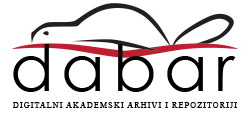| Sažetak | Nakon pandemije Covid-19 i rekordnih sušnih razdoblja koja su znatno utjecala na poljoprivredno-prehrambeni sustav i sigurnost hrane, bila je očita potreba za promjenom. EU nastoji promijeniti način proizvodnje i potrošnje hrane u Europi kako bi se smanjio ekološki otisak prehrambenih sustava, ojačala njihova otpornost na krize i nastavilo osiguravati zdravu i cjenovno pristupačnu hranu za buduće generacije. Zato je u svibnju 2020. predstavljena strategija „od polja do stola“ s nizom ciljeva koji će osigurati sigurnost hrane i sigurnost opskrbe hranom. Ciljevi između ostalog uključuju smanjenje gubitka i rasipanja hrane, smanjenje upotrebe pesticida i gnojiva te dostatna, cjenovno pristupačna i hranjiva hrana unutar granica mogućnosti planeta. Komisija je predstavila rješenja i planove kako implementirati navedene ciljeve u proizvodnju hrane, kao što su prelazak na organske pesticide i gnojiva, pametna poljoprivreda, plodored, mehaničko uklanjanje korova, akcije za širenje svijesti o bacanju hrane i organizacija Europskog mehanizma za pripravnost i odgovor na krizu sigurnosti hrane (EFSCM) koji će pratiti kretanje hrane u slučaju krize. U početku je strategija bila široko prihvaćena, iako su se već tad počele javljati zabrinutosti kako će ona utjecati na količinu prinosa ako se smanji upotreba pesticida i gnojiva te da li će se time povećati uvoz proizvoda iz drugih zemalja van EU koje nemaju toliko stroge ekološke zakone. Mnogi su istaknuli da strategija nije bila potkrijepljena procjenom utjecaja, kao što se obično radi za inicijative za koje se očekuje da će imati značajan ekonomski, društveni ili utjecaj na okoliš. No, pravi preokret se dogodio u veljači 2022. gdje se sigurnost hrane opet stavila pod upitnik zbog ruske invazije na Ukrajinu. Rusija i Ukrajina zajedno čine više od 30% svjetskog izvoza određenih ratarskih proizvoda. Zbog visokih cijena plina, ključnog resursa u proizvodnji gnojiva, došlo je do obustave proizvodnje u mnogim europskim pogonima. Sve je to rezultiralo visokim cijenama hrane, posebice one koje nastaju ratarskim kulturama, kao što je suncokretovo ulje ili kruh. Visoke cijene hrane i energije nastavljaju utjecati na kupovnu moć europskih potrošača što je dovelo u pitanje održivost strategije „od polja do stola.“ Neki smatraju da je sada pravo vrijeme da se ciljevi strategije „pauziraju“ ili u potpunosti obustave, dok su drugi još više motivirani da se ciljevi trebaju nastaviti implementirati. Iako hrana EU-a nije u izravnoj opasnosti, akcije su potrebne kako bi se njena sigurnost očuvala, kako bi se pomoglo građanima, poljoprivrednicima i zemljama izvan EU-a. |
| Sažetak (engleski) | After the Covid-19 pandemic and record drought periods that have significantly affected the agri-food system and food security, the need for change is obvious. The EU aims to change the way food is produced and consumed in Europe in order to reduce the ecological footprint of the food system, strengthen its resilience to the crisis and continue to ensure healthy and affordable food for future generations. That's why in May of 2020, the "farm to fork" strategy was presented with a series of goals that will ensure food safety and security of food supply. Among other things, the goals include reducing food loss and waste, reducing the use of pesticides and fertilizers, and providing sufficient, affordable and nutritious food within the limits of the planet's capabilities. The Commission presented solutions and plans to implement the stated goals in food production, such as the transition to organic pesticides and fertilizers, smart agriculture, crop rotation, mechanical weeding, actions to spread awareness about food waste and the organization of the European Crisis Preparedness and Response Mechanism (EFSCM) which will monitor the movement of food in the event of a crisis. Initially, the strategy was widely accepted, although even then concerns began to arise about how it would affect the amount of yields if the use of pesticides and fertilizers was reduced, and whether this would increase the import of products from other countries outside the EU that do not have such strict environmental laws . Many pointed out that the strategy was not supported by an impact assessment, as is usually done for initiatives expected to have a significant economic, social or environmental impact. No, the real upheaval occurred in February 2022, when food security was again called into question due to the Russian invasion of Ukraine. Russia and Ukraine together account for more than 30% of world exports of certain agricultural products. Due to the high prices of gas, a key resource in the production of fertilizers, there was a suspension of production in many European plants. All this resulted in high food prices, especially those produced by field crops, such as sunflower oil or bread. High food and energy prices continue to affect the purchasing power of European consumers, which has called into question the sustainability of the "farm to fork" strategy. Some believe that now is the right time to "pause" the strategy's goals or suspend them altogether, while others are even more motivated that the goals should continue to be implemented. Although EU food is not in immediate danger, action is needed to keep it safe, to help citizens, farmers and countries outside the EU. |

